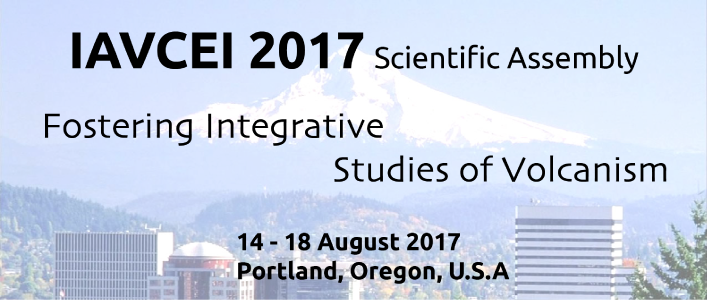SCIENTIFIC PROGRAM
III. From precursors to eruption
III.1 Forecasting volcanic eruptions
Conveners:
Sarah Ogburn, USGS/USAID Volcano Disaster Assistance Program; sogburn@usgs.gov
Mike Cassidy, University of Oxford, UK; University of Mainz, Germany; mcassidy@uni-mainz.de
Nicole Bobrowski, University of Mainz, Germany; nbobrows@uni-mainz.de
Jonathan M. Castro, University of Mainz, Germany; castroj@uni-mainz.de
Susanna Ebmeier, University of Leeds, UK; S.K.Ebmeier@leeds.ac.uk
Chris Harpel, USGS/USAID Volcano Disaster Assistance Program; charpel@usgs.gov
Wendy McCausland, USGS/USAID Volcano Disaster Assistance Program; wmccausland@usgs.gov
Jürgen Neuberg, University of Leeds, UK; J.Neuberg@leeds.ac.uk
John Pallister, USGS/USAID Volcano Disaster Assistance Program; jpallist@usgs.gov
Jeremy Pesicek, USGS/USAID Volcano Disaster Assistance Program; jpesicek@usgs.gov
Jay Wellik, USGS/USAID Volcano Disaster Assistance Program; jwellik@usgs.gov
Heather Wright, USGS/USAID Volcano Disaster Assistance Program; hwright@usgs.gov
Eruption forecasts, including the timing, magnitude, style, and duration, as well as the nature of impacts, are vital for volcanic hazard assessment and risk mitigation. Forecasts are achieved through various methods, including discussion and consensus, expert judgment elicitation, and probabilistic event trees. Forecasts often rely upon both local and global analogue eruptive records, monitoring data, numerical models, and global statistical data on patterns of unrest. Forecasting shifts in eruptive style from effusive to explosive activity or changes in the magnitude of eruptions can be particularly difficult; the eruptive record may not provide sufficient detail, and already open-system volcanoes may not produce significant changes in monitoring data. Discussion of these challenges, assessment of the success or failure of forecasts, and investigation of the factors that contribute to such results is vital to progress in the field.
This session seeks contributions that address eruption forecasting during volcanic crises, especially those that include changes in eruptive style or magnitude. Contributions could include: case-studies of eruption forecasts during crises, including successes and failures; multi-disciplinary forecasting methods, including the use of monitoring data, petrologic data, and/or modelling to forecast the size and style of eruptions; and ways to integrate local and global data into forecasts.


